When considering purchasing a new grow light for a hydroponic system, it is important to take various factors into account before selecting the appropriate light fixture.
Choosing the most suitable grow light for hydroponics may present a challenging decision.
When determining the appropriate size or wattage, it is important to consider the dimensions of the hydroponic system and the types of plants being cultivated.
- Related article: Hydroponic Water System
This guide will discuss seven of the best grow light systems, as well as some of the important features and criteria to consider when choosing a grow light.
Why Use Grow Lights for Hydroponics?
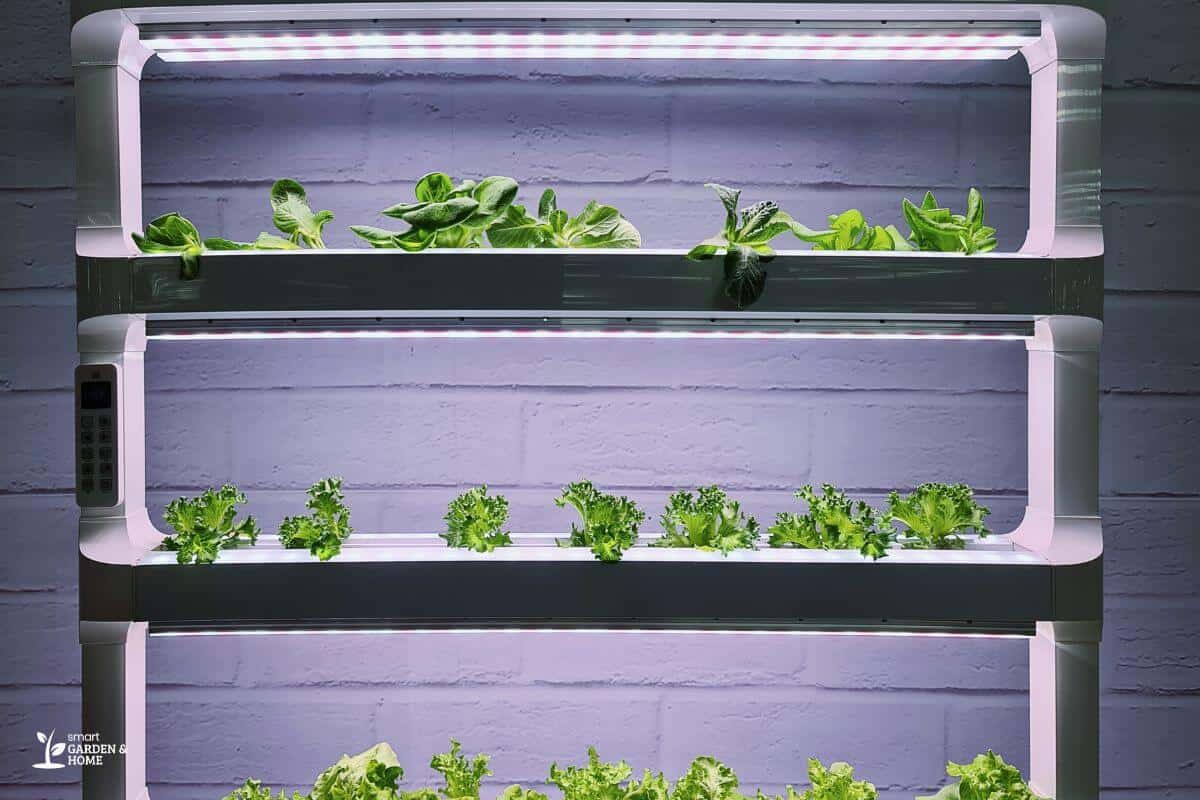
Let the sunshine in! To help your outdoor-grown veggies and plants reach their full potential, they crave a daily dose of around 8 hours of natural sunlight.
Behold the magic of photosynthesis! Through the power of sunlight, plants flourish and generate the energy they need to thrive.
- Related: Are Grow Lights Better Than Sunlight
Indoor hydroponic systems use grow lights as an artificial replacement for the bright light of the sun. These grow lights are able to emit high-intense artificial lighting.
During the winter time, artificial lightings can be used to extend the natural hours of light in a day.
How Do Grow Lights Work in Hydroponic Gardens?

The lights that are used in a hydroponic system aren’t your everyday standard light bulb. Hydroponic plants require a broad spectrum light source that emulates the light energy from the sun.
Grow lights artificially recreate the sun’s natural light to allow plants to photosynthesize indoors.
These lights offer different light spectrum ranges, in comparison to standard light bulbs that offer a low spectrum of light.
These lights will consume electricity, but modern grow lights have been designed with energy-saving technology, to use less power than light bulbs.
Energy-saving grow lights come in handy especially when you are running a hydroponic farm.
The heat from the sun can be intense and damage precious leafy green plants and older grow lights have the tendency to produce extreme heat.
Newer grow lights have fixed this problem by remaining cool and are mainly fitted with LED lights that are safe to touch.
The sun rises and sets at different times according to the season. Grow lights can be connected to a timer to replicate the hours of light per day for different seasons.
Plants require longer hours of sunlight for their vegetative stage and shorter periods of light when flowering.
What Are the Types of Grow Lights Available in the Market?
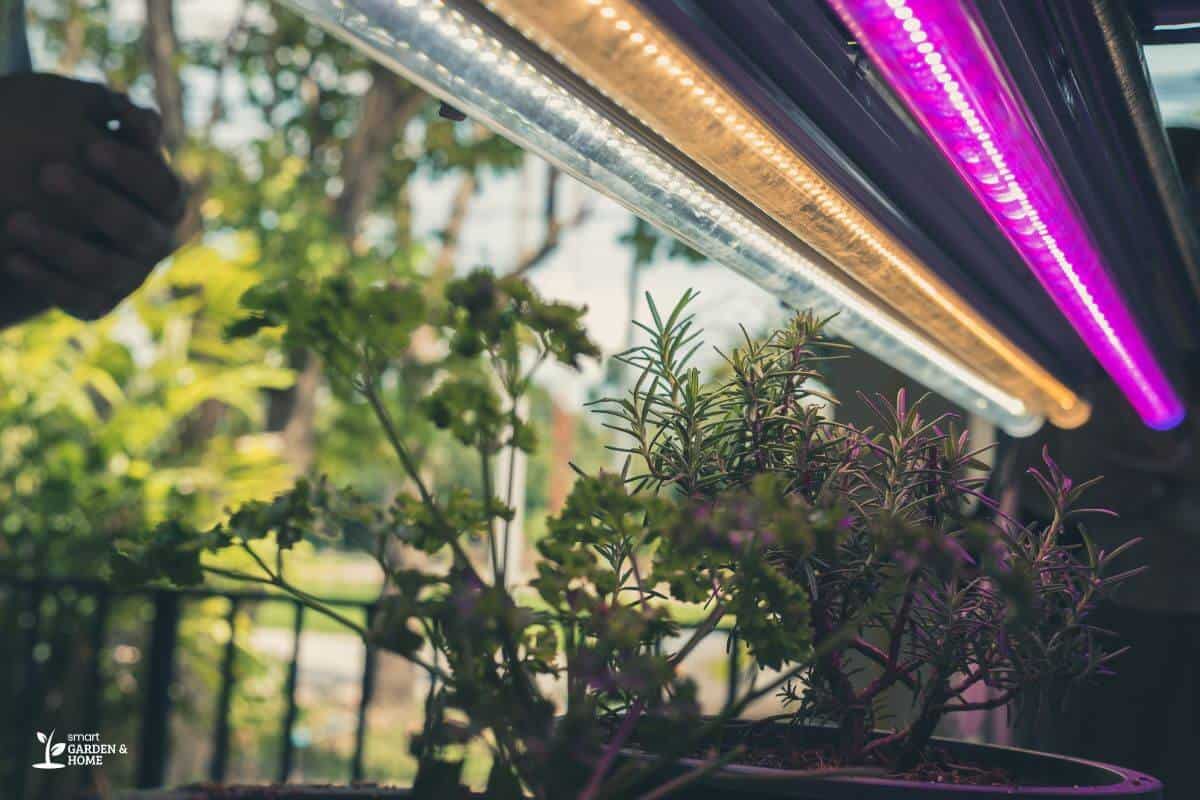
There are many types of grow lights in the gardening world. Which one the right type for you depends on your situation and setup.
In my experience, the best grow lights for hydroponic growing are LED lights, High-Intensity Discharge (HID) lights, and Fluorescent lights.
LED lights are extremely energy-efficient and long-lasting, making them a popular choice among hydroponic enthusiasts.
HID lights, such as Metal Halide (MH) and High-Pressure Sodium (HPS) lamps, are known for their intensity and ability to penetrate the plant canopy, ensuring that even the lower leaves receive adequate light.
Fluorescent lights, particularly T5 bulbs, are ideal for seedlings and young plants, as they emit a gentle, cool light that won’t burn delicate foliage.
Let’s get into more detail with the various grow light types:
1. Fluorescent Grow Lights
Fluorescent Grow Lights is the most common type and it produce low levels of heat and offer a broad spectrum of light for growing plants.
These grow lights are produced in a tube form, and the most common fluorescent grow light is the T5. Fluorescent light bulbs can also come in compact fluorescent reflecting bulbs (CFL).
Let your seedlings shine bright like a diamond with fluorescent lamps! But, for hydroponic plants who want to party under the sun, these lights just won’t cut it.
Experience unbeatable energy efficiency with these lights—they outshine even incandescent grow lights!
Energy-efficient bulbs have benefits, but they could be more expensive due to the cost of fluorescent growing lights.
I found that using the Durolux Direct fluorescent grow lights is effective. Hang these lights 3-4 feet above your plants. They remain cool and will never scorch the leaves of your plants.
2. Incandescent Grow Lights
Incandescent Grow Lights have a high heat output, with 90% of the energy they use being converted into heat.
Illuminate your space with white lights! Not only do they consume only 10% of energy, but when paired with fluorescent grow lights, they create a dynamic and complete light spectrum.
Light up your growing game with a wide range of wattages for incandescent grow lights, perfect for growers looking for a cost-effective solution.
The key to unlocking the full potential of incandescent light bulbs lies in the power of proper ventilation and cooling.
Brighten up your low-light plants with the unbeatable effectiveness of incandescent grow light systems! But beware, high-light plants won’t be too fond of this lighting option.
The Feit electric incandescent grow light is one of the top-rated growing lights. Are you a hydroponic newbie? Look no further than this incredible grow light, perfect for those just starting out!
Get ready to be dazzled by this super efficient light source that produces over 25,000 lumens, illuminating the entire spectrum of light!
3. Light Emitting Diode (LED) Grow Lights
LED Grow Lights are a highly energy-efficient option for individuals looking for a grow light system, as they consume significantly less electricity, up to 90%, than other types of grow lights.
Efficiency comes at a cost, as these light bulbs are a more expensive option than other grow lights.
In the long run, you will end up saving by using LED grow lights. The amount of energy cost that is saved will easily repay the extra amount you paid for.
LED lightings are energy-efficient and safe for plant use as they do not emit heat that could potentially scorch leaves.
LED grow lights provide a comprehensive range of light that can be utilized to cultivate any plant species.
LED grow lights typically feature various light settings, including a purple/violet light that emits shorter wavelengths of light.
This secondary light is useful to facilitate the growth of a plant’s vegetation.
Illuminate your plants with numerous types of LED grow lights, ranging from tubes to bulbs, all available on the market!
The Spider Farmer LED grow light system is one of the tops grow lights available.
I fully recommend you consider purchasing this product as it comes with a 1000w diode layout and has fuller coverage of 3×3 feet.
4. Halogen Light
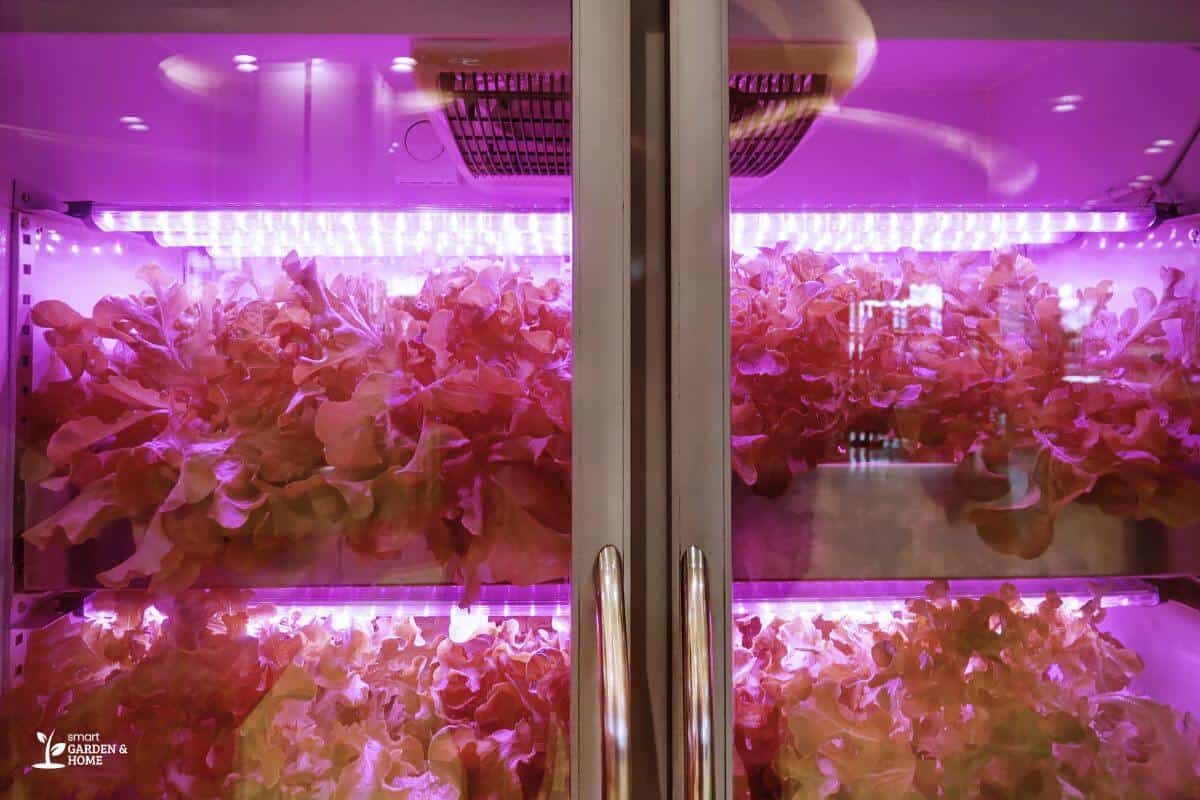
Halogen Light Bulbs are considered ineffective for growing plants.
Before you invest in those fancy plant lights, consider this: the effectiveness of these lights for plant growth may be high for succulents, the spectrum of their glow may not be the best for indoor plants.
The light bulbs produce higher levels of red light and lower levels of blue light.
Halogen light bulbs are definitely a practical option with a jaw-dropping 25% higher brightness level than incandescent bulbs and a mind-blowing lifespan of up to 2000 hours!
It is possible that additional grow lights may be necessary to enhance the effectiveness of these lights as they may not be as powerful as other light bulbs.
Vinaco has designed a GU10 halogen light bulb that can be used to grow hydroponic plants indoors.
5. High-Pressure Sodium (HPS) Light
High-pressure Sodium Lights form part of the high-intensity light bulb variety.
Behold, these luminous marvels illuminate our streets! The amalgamation of gases and metals within the bulb produces a beautifully radiant hue of orange-white.
HPS light bulbs require a specific type of ballast and are not compatible with other ballast types.
Indoor hydroponic growers prefer to use HPS systems over other grow lights because of the broad spectrum of light that they produce.
In terms of efficiency, HPS light bulbs are not the most economical and produce a lot of heat. Make sure that there is an effective ventilation system to extract the excessive heat that is produced.
Hydroplanet produces quality HPS grow light stems. They are affordably priced under $100 and are fitted with a 150w HPS bulb.
I recommend you consider purchasing this product as it provides extensive coverage for a large hydroponic system.
6. Metal Halide (MH) Light
Metal Halide Lights are designed to use in hydroponic systems for the growing cycle of plants.
The light that MH light bulbs give off is the closest to natural light that you will be able to find. Similar to the HPS system, MH light bulbs will only work with a ballast that has the same watts.
MH light bulbs have a high level of efficiency, producing between 65 and 115 lumens of light per unit of electricity.
The sizes of these items range from 70w to 1500w and can be replaced after 9500 hours of usage.
7. Sulphur Plasma Grow Lights
Sulphur Plasma Grow Lights are an efficient full-spectrum lighting system.
The source of light is generated through a process of chemically altering sulphur plasma with microwave radiation, a technology that was first developed in the 1990s and gained popularity.
Sulphur plasma lights have a warm-up time that is relatively shorter than other gas discharge lamps, but still require some time to warm up.
The lamps are mercury-free, posing no environmental threat and can be disposed of easily.
Sulphur light bulbs have a lifespan of up to 60 000 hours before needing replacement.
These light bulbs were considered a commercial failure by the early 2000s. In recent years, sulphur plasma grow lights have been manufactured for commercial use.
How to Choose a Correct Grow Light Considering Relevant Factors?
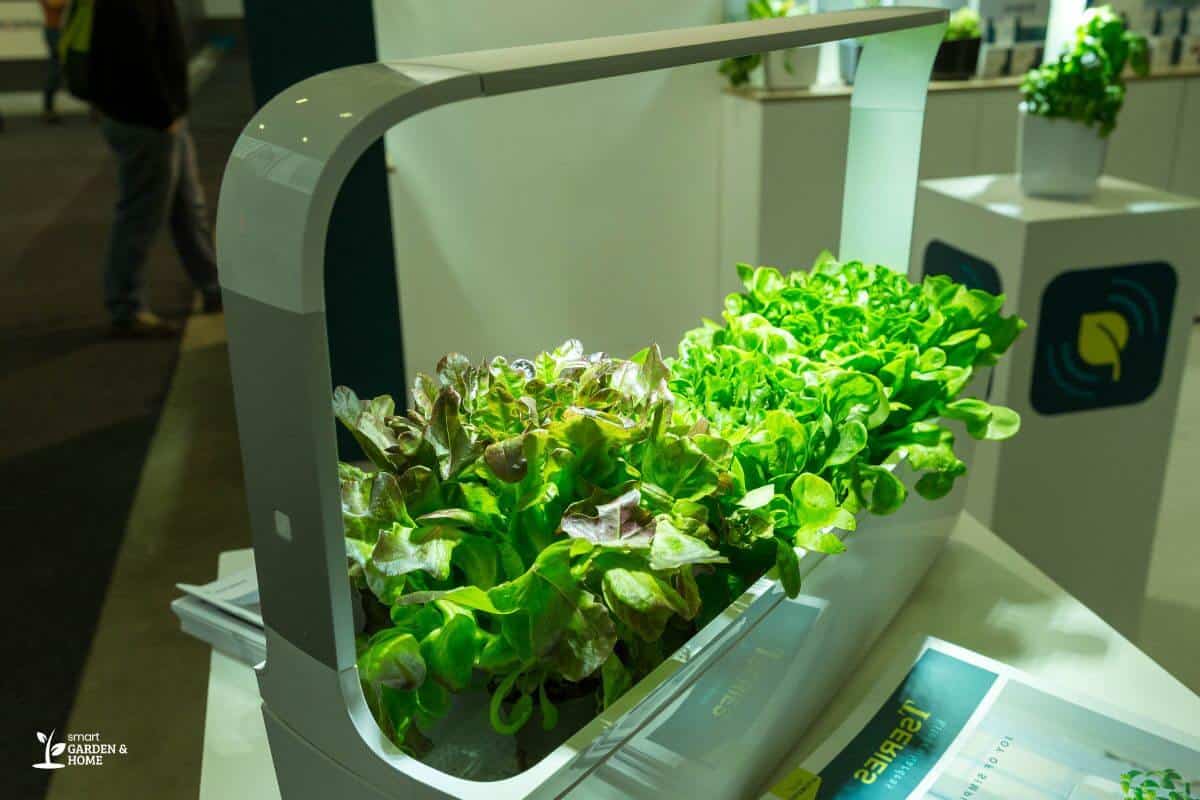
Multiple considerations should be considered when choosing a suitable grow light for a hydroponic setup.
Get ready to dive deep into the world of grow lights and discover the key features that will help you pick the perfect one to keep your plants thriving!
Lumens
The lumen reading of a light bulb is a unit of measurement used to calculate the amount of visible light emitted by the bulb.
One crucial factor to consider when selecting a hydroponic grow light is this measurement.
You will need a grow light that emits sufficient lumens to cover your entire crop.
The light intensity is pretty much the same as the lumens, however, intense lights is measured by the amount of power your light requires to generate light.
Kelvins
Kelvins is a measurement used to assess the color temperature in a lighting source.
Whilst a higher Kelvin rating emits a white cool light, a lower Kelvin rating emits a warmer yellow light.
Make sure to choose the correct hydroponic light with a Kelvin rating that is best suited for the type of hydroponic plants you want to grow.
PAR Value
The PAR Value of a grow light measures the photosynthetic radiation given off by a lamp.
Grow lights with a high PAR value will ensure maximum plant growth, making this an important factor to consider when choosing a grow light.
Best Grow Lights for Hydroponic Growing
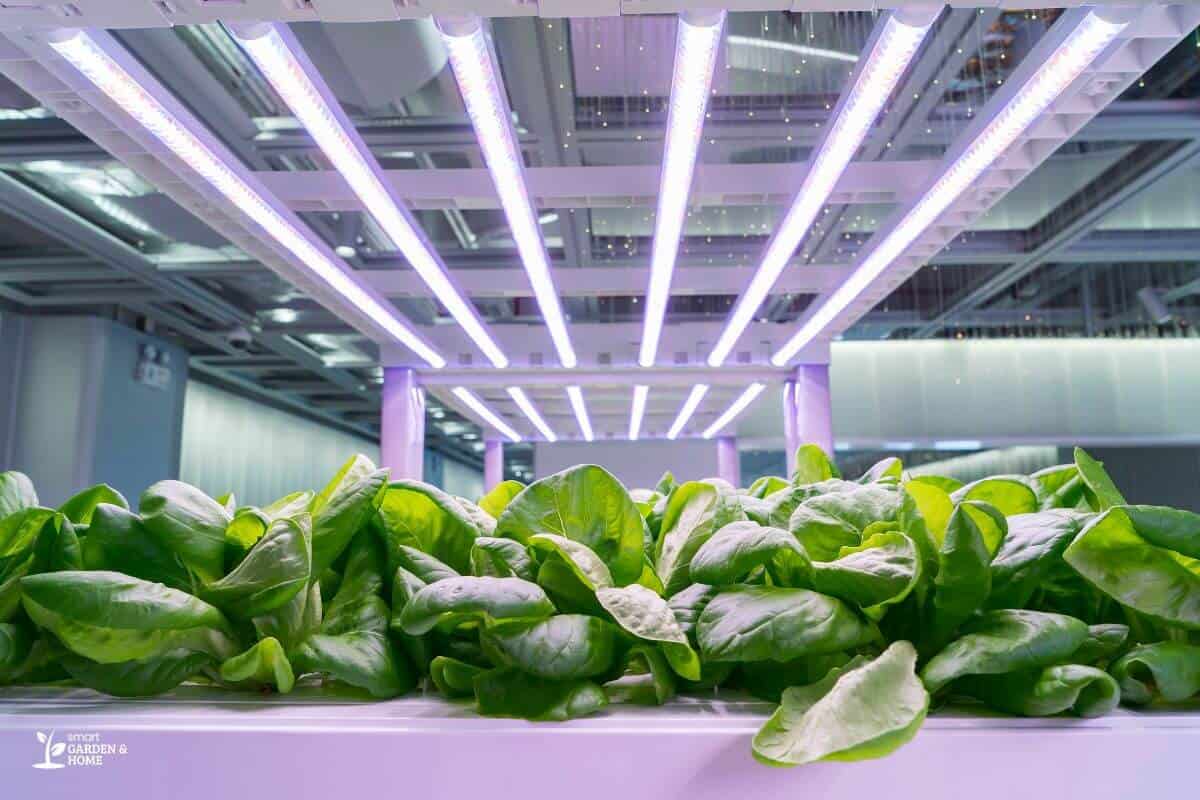
When it comes to cultivating a thriving hydroponic garden, selecting the optimal lighting solution is crucial for success.
As a hydroponic gardener myself, I understand the importance of choosing the right grow lights to ensure the health and productivity of my plants. The right grow lights can make all the difference in the world when it comes to the quality and quantity of your harvest.
I know how important it is to feel confident in the choices you make for your garden. By selecting the appropriate grow lights for your specific needs and understanding their unique benefits, you’ll be well on your way to enjoying a lush, bountiful hydroponic harvest.
GE Lighting Grow Light for Plants – Best Overall Grow Light
You’ll be blown away by the GE Lighting Grow Light for Plants. It not only keeps your indoor garden thriving but also blends seamlessly with your home decor – talk about killing two birds with one stone!
These LED floodlight bulbs provide high-quality plant light for your indoor gardens year-round, so you can grow fruits, flowers, and veggies like a pro.
The pleasing natural light temperature ensures that the bulbs integrate well with any decorative aesthetic. The advanced LED technology means that they use only 9 watts of energy while keeping heat generation to a minimum.
Whether you’re growing tomatoes, cucumbers, peppers, flowers, or fruit trees, the GE Lighting Grow Light’s red light spectrum is perfect for supporting your plants during their fruiting or flowering growth stage.
The high output PPF of 15 micromoles per second is impressive, and users have reported faster growth and happier plants under these lights.
The pros of using the GE BR30 LED Grow Light Bulb are:
- Soft, natural light temperature that blends well with home décor
- High output PPF for impressive plant growth support
- Uses advanced LED technology for energy efficiency
- Affordable at around $40.
- Simple and elegant design.
- Is able to fit in the majority of light fittings.
- vBalanced full spectrum of light.
- Compact and can be used in small hydroponic systems.
The cons of using this light bulb are:
- A bit on the pricey side
- Bulb is heavy, requiring a strong lamp and support
- Short life span—the light bulb burns out over a few months.
Aspect Luxury LED Grow Light – Runner Up Grow Light
Imagine showcasing your favorite plants while also providing them with the optimal environment to flourish, all with the stunning Aspect Luxury LED Grow Light.
This pendant light not only adds a touch of elegance to your space but also promotes plant growth and flowering using NASA studies and the latest horticulture research.
With the included basic outlet timer, wall fairleads, swag hook, and instructional guide, you’ll find this light to be a breeze to install, allowing you to enjoy the benefits of hydroponic gardening in style.
The Aspect Luxury LED Grow Light has a customer rating of 4.7 out of 5 stars, making it a top choice amongst plant enthusiasts. Its warm color spectrum and solid construction set it apart from other grow lights in the market.
However, its higher price point may not make it the best choice for everyone, but for those who value both aesthetics and function, this light is worth every penny.
Here are some of the pros to purchasing this light:
- Easy to install
- Stylish design
- Warm color spectrum
- Timer function
- Solid construction with no plastic
- Long life expectancy (15 years)
- Comes in different shapes and sizes
- Installation equipment is included when purchasing the product
- Simple and minimalist design
Here are some of the cons to purchasing this product:
- Cord may not lie flat against wall
- Timer plug may not work for all users
- Higher price point compared to other grow lights on Amazon
- Other similar models are cheaper, but this grow light is slightly pricier than other grow lights.
Best Budget-Friendly Grow Light – Aceple LED Grow Light
If you’re looking for a compact and versatile option, the Aceple LED Small Grow Light is an excellent choice. This 6W desk plant grow light is perfect for providing your indoor plants, succulent plants, and potted plants with the necessary spectrum of light to accelerate their growth.
The flexible gooseneck arms and spring clamp make it easy to position the light in any direction, and the three different ways to fix the clamp (Clip, Screw, or Stick) ensure that the light is secure and won’t fall on your plants. Plus, the energy-saving design means low heat and low power consumption, so you can feel good about using the Aceple LED Small Grow Light on your hydroponic plants.
The Aceple LED Small Grow Light is not only compact and versatile, but it’s also highly efficient. The lamp provides a special spectrum of light, including 460nm, 630nm, and 660nm wavelengths, which are perfect for promoting healthy leaves, blooming, and fruiting.
This smart desk lamp can be used for tabletop plants and moderately big plants alike, and its 15.8-inch gooseneck arm and clamping range of up to 2 inches make it easy to adjust as needed.
The Aceple LED Grow Light is our pick for the best budget-friendly grow light.
Here are some pros to purchasing the light bulb:
- Compact, lightweight, and versatile design
- Energy-saving, low heat, and low power consumption
- Perfect for promoting healthy leaves, blooming, and fruiting
- Easy lamp assembly setup
- Portable and can be easily moved around in a hydroponic system
- Strong clamping system with rubber feet so it will secure to any surface.
The cons of using this grow light are:
- Surface of the LED lamp gets highly heated within a few minutes of switching ON.
- Spring clamp can only be opened to a maximum thickness of 50 mm.
- There is no electric timer on the light fitting. It has to be plugged into an independent electric timer.
Looking for something else? Here are other recommended grow lights that might suit your preference:
- VIVOSUN T5 Grow Light
- DuroLux DL822N T5 HO
- Feit Electric Full Spectrum LED Hydro Grow Light Bulb
- Spider Farmer 2023 New SF1000 LED Grow Light
- Vinaco GU10 Bulb
- Hydroplanet Hydroplanet™ Grow Light Fixture
- Sunlite MH70/U/MED 70-Watt
Final Thoughts on the Best Grow Lights for Hydroponics
Finding the perfect grow light for my hydroponic garden was a game-changer. I was able to achieve better growth and healthier plants. Investing in the right grow light can transform your hydroponic growing experience. So, don’t hesitate to explore and choose the best fit for your plants.
Unlock your plants’ full potential by selecting the perfect light—factors like color spectrum, intensity, and duration of light exposure are key to their growth and wellbeing.
Revolutionize your hydroponic farming with energy-efficient LED grow lights that provide the perfect light spectrum and are a breeze to manage.
To achieve the best results, it is crucial to invest in high-quality grow light and follow a consistent lighting schedule exposure.
By doing so, you can create a thriving indoor garden with healthy plants that yields abundant and healthy crops!
Check out these articles for more information about grow lights for hydroponics:




